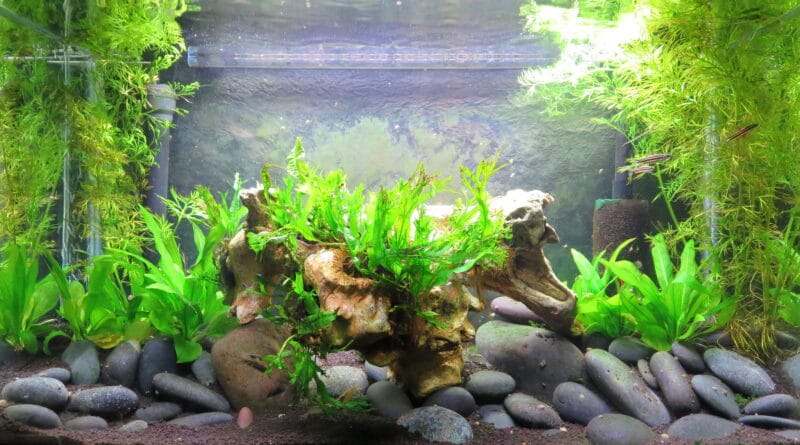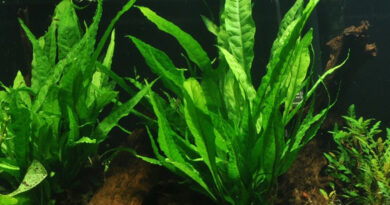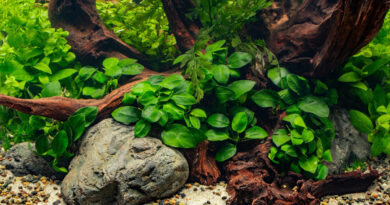Best Beginner Aquarium Plants: Easy, Hardy, and Low-Maintenance Choices
Keeping live plants in your aquarium is one of the best ways to create a vibrant, healthy, and natural-looking underwater world. Not only do they make your tank more beautiful, but they also improve water quality, provide hiding places for fish and shrimp, and even help prevent algae growth. But as a beginner, you might wonder: Which plants are actually easy to grow and maintain? Which are the best beginner aquarium plants?
The truth is, not all aquarium plants are beginner-friendly — some need high light, special fertilisers, or CO₂ injection to thrive. That’s why it’s important to choose hardy, low-maintenance species that can adapt to a variety of conditions and still flourish.
In this guide, we’ve hand-picked the best aquarium plants for beginners — easy to care for, forgiving of mistakes, and perfect for enhancing your fish tank. You’ll also find quick care tips for each plant and links to in-depth care guides where available. Whether you’re setting up your first tank or upgrading an existing one, these plants will set you up for success.
If you’re still deciding how to plan your aquarium community, check out our guide to choosing the right freshwater fish for your setup, which walks you through tank size, compatibility, temperament, and stocking.
Why Live Plants Are Great for Beginners
If you’re new to fishkeeping, you might wonder if live plants are worth the effort, especially when artificial plants seem easier. But live plants offer many benefits that make them ideal for beginners:
- Improved water quality: Plants naturally absorb harmful nitrates and ammonia, helping to keep your tank stable and healthier for fish and shrimp.
- Algae control: Healthy plants compete with algae for nutrients, reducing the risk of green water and unsightly algae blooms.
- Natural shelter: Fish feel safer and less stressed when they can hide among plants, leading to better behaviour and brighter colours.
- More natural look: Live plants create a lush, vibrant aquascape that’s more visually appealing and closer to nature.
Best of all, many beginner-friendly plants are incredibly hardy and forgiving, tolerating low light, variable water parameters, and the occasional missed water change. Starting with easy, low-maintenance plants allows you to gain confidence as you learn the basics of aquarium care.
By choosing the right plants from the start, you’ll make your tank easier to maintain and create a healthier home for your aquatic pets.
✅ Live plants also create an ideal habitat for peaceful invertebrates like shrimp — see our freshwater shrimp care guide if you’d like to include them in your planted tank.
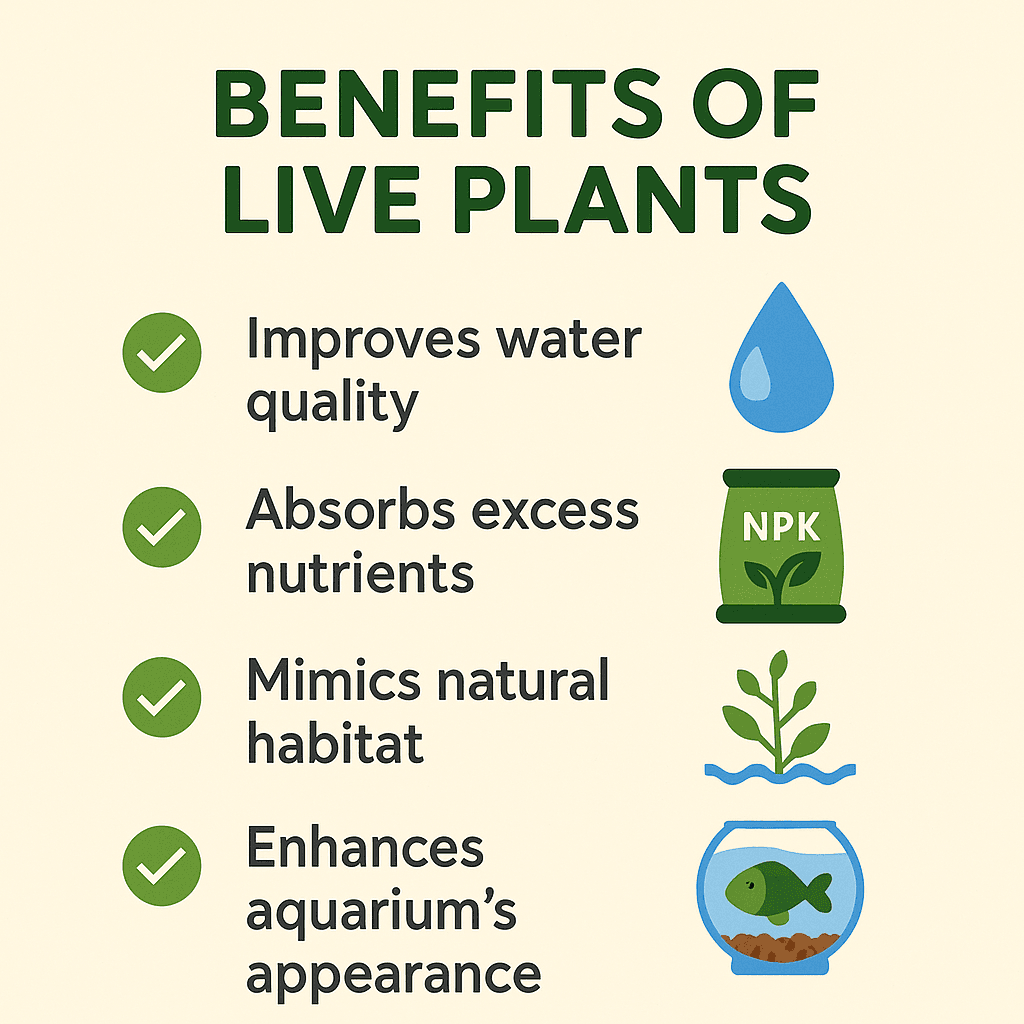
Factors to Consider When Choosing Beginner Plants
When selecting plants for your first aquarium, it’s important to pick species that match your tank setup, your goals, and your level of experience. Here are the key factors to keep in mind:
1. Light Requirements
Not all plants need the same amount of light. Many beginner plants thrive in low to moderate light, making them perfect for standard aquarium lighting. Avoid plants that demand high-intensity light or specialised fixtures when starting out.
2. CO₂ Needs
Some plants grow faster and show better colouration with CO₂ injection. However, plenty of beginner-friendly plants do just fine without additional CO₂, which keeps things simple and low-cost.
3. Growth Rate and Maintenance
Fast-growing plants can help prevent algae by absorbing excess nutrients, but they also require more frequent trimming. Slower-growing species like Anubias and Java Fern are low-maintenance, making them great choices if you prefer less work.
4. Hardiness
Beginner plants should tolerate a range of water parameters and recover well from common mistakes like missed water changes, algae outbreaks, or minor damage. Hardy plants give you more room to learn.
5. Placement and Purpose
Consider where you want to place each plant — foreground, midground, background, or floating — and what role it plays in your aquascape. Different plants fill different niches and create depth and variety in your tank.
Choosing plants with these factors in mind will set you up for success and help you build a thriving, balanced aquarium with less stress.
Avoid common mistakes that harm even hardy plants — here’s our guide to avoiding aquarium mistakes.
Top Beginner-Friendly Aquarium Plants
Here are some of the best aquarium plants for beginners, chosen for their hardiness, low maintenance, and versatility. Each comes with a quick care overview so you can decide which ones fit your setup.
1. Java Fern (Microsorum pteropus)
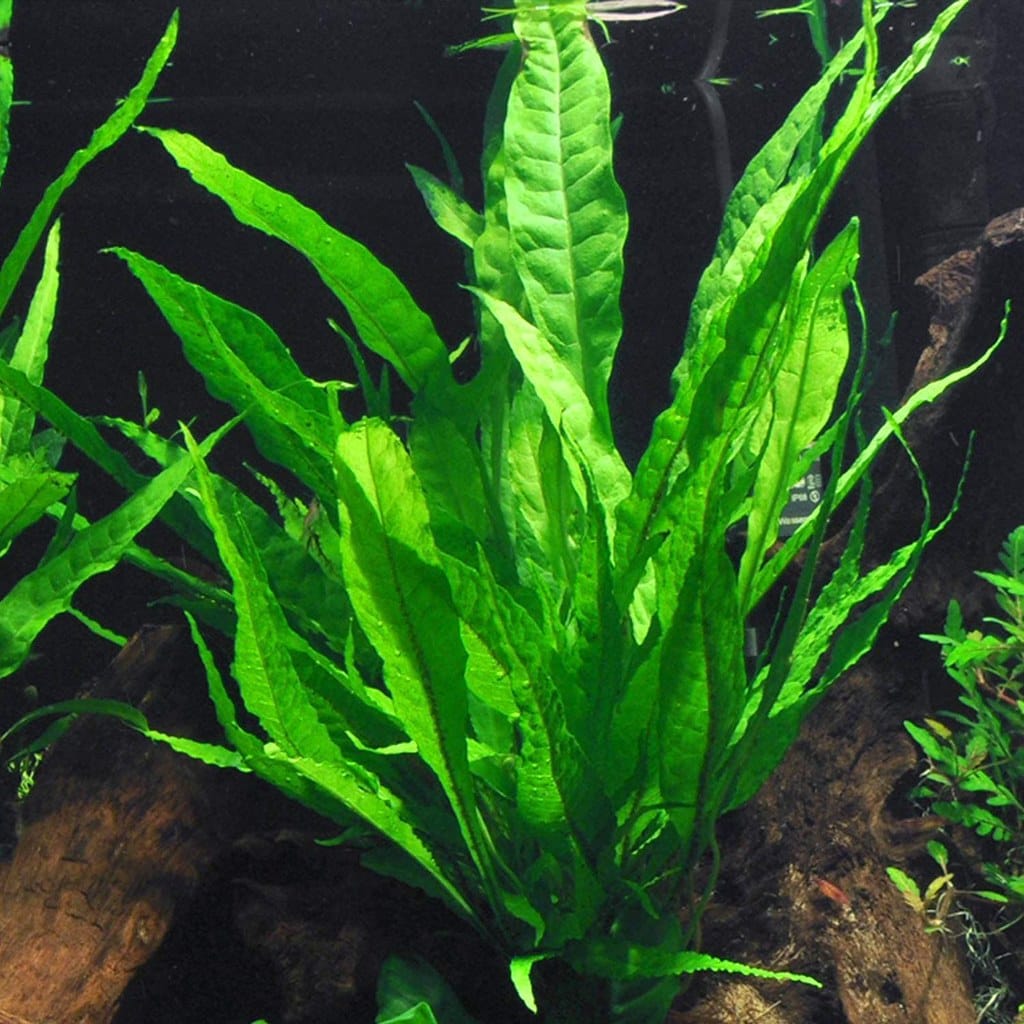
Java Fern is a classic beginner plant known for its resilience and striking, bright green leaves. It thrives in low light and doesn’t require CO₂ injection.
- Lighting: Low to moderate
- CO₂: Not required
- Placement: Midground or background, attach to rocks or driftwood
- Why it’s great: Very forgiving and does well in a wide range of conditions.
For more on care and placement, check out our full Java Fern care guide.
2. Anubias (Anubias barteri and varieties)
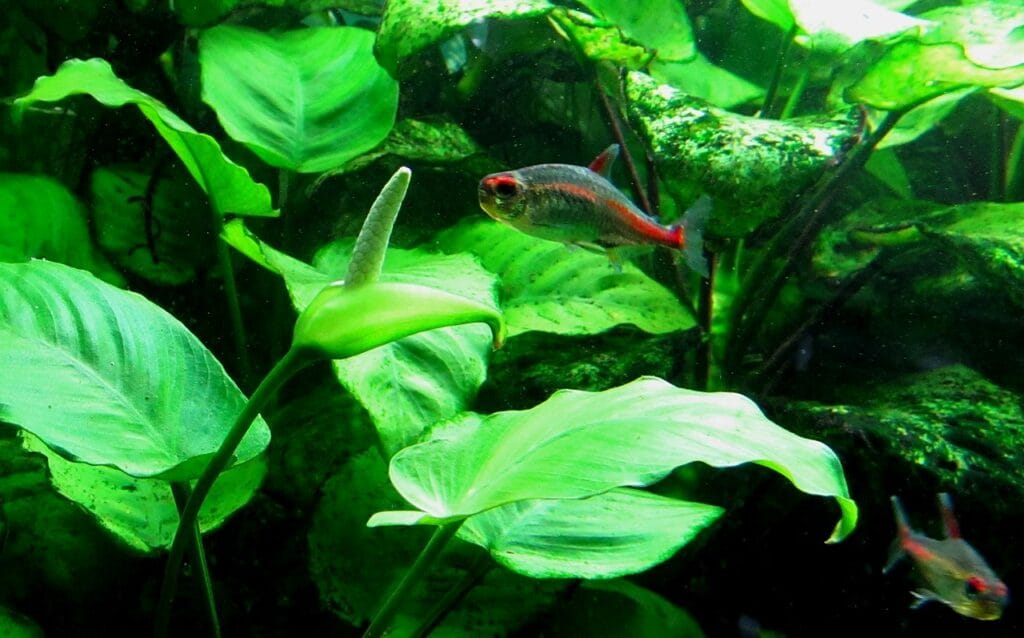
Anubias species are slow-growing, hardy, and nearly indestructible. They are perfect for low-tech setups.
- Lighting: Low
- CO₂: Not required
- Placement: Foreground to midground, attach to hardscape
- Why it’s great: Tolerates low light and thrives even in tanks with no fertiliser.
For planting and long-term care tips, visit our Anubias care guide.
3. Vallisneria (Vallisneria spiralis)
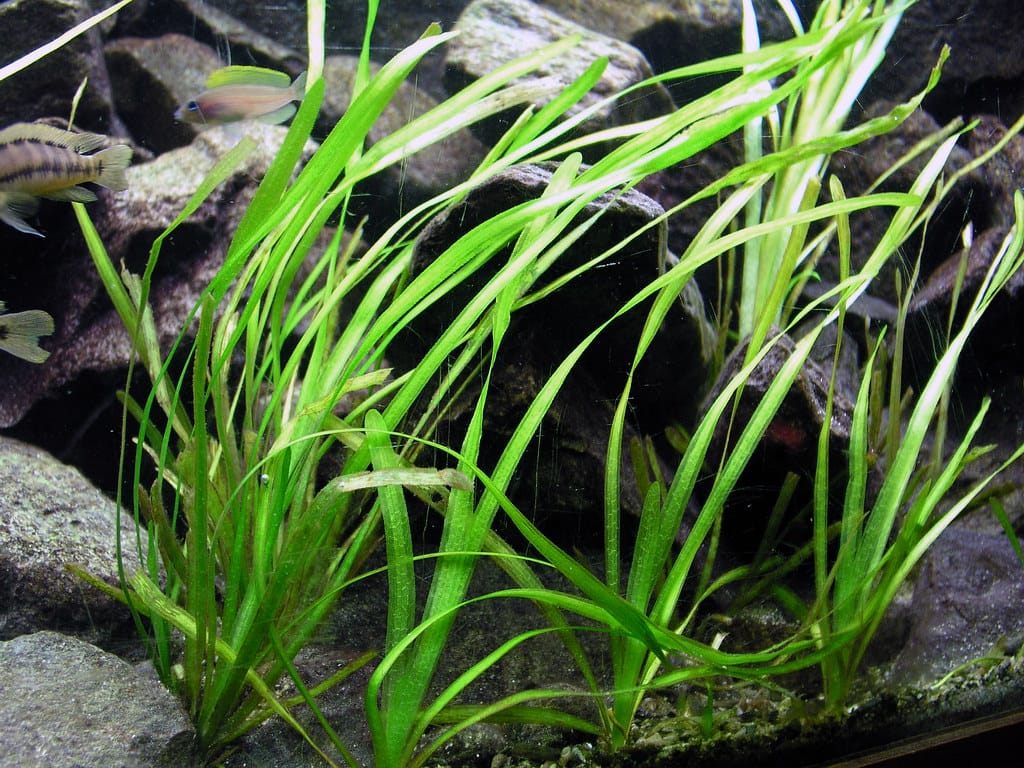
Often called “eelgrass,” Vallisneria is a fast-growing, grass-like plant that propagates through runners. It quickly creates a lush background.
- Lighting: Low to moderate
- CO₂: Not required
- Placement: Background
- Why it’s great: Grows quickly and provides great cover for fish and fry.
We also have a dedicated Vallisneria care guide covering propagation and maintenance.
4. Cryptocoryne (Cryptocoryne wendtii and others)
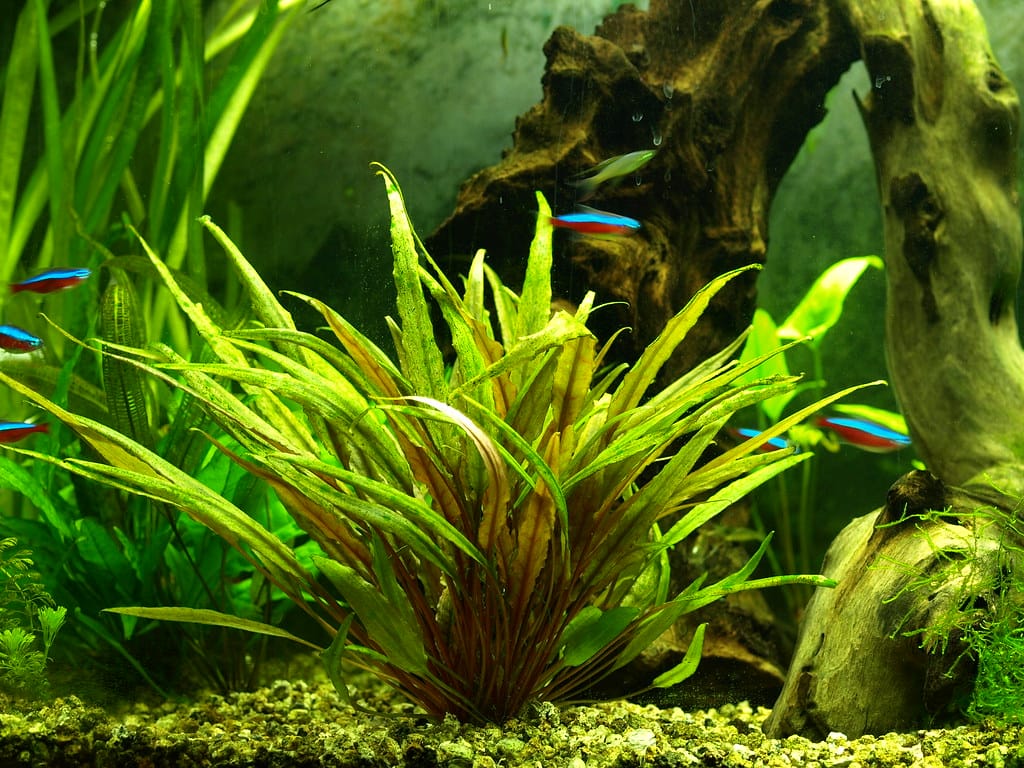
Cryptocorynes come in a variety of colours and leaf shapes. They’re hardy but may experience “crypt melt” when first planted — they usually recover well.
- Lighting: Low to moderate
- CO₂: Not required
- Placement: Foreground to midground
- Why it’s great: Adds colour and texture without much care.
5. Hornwort (Ceratophyllum demersum)
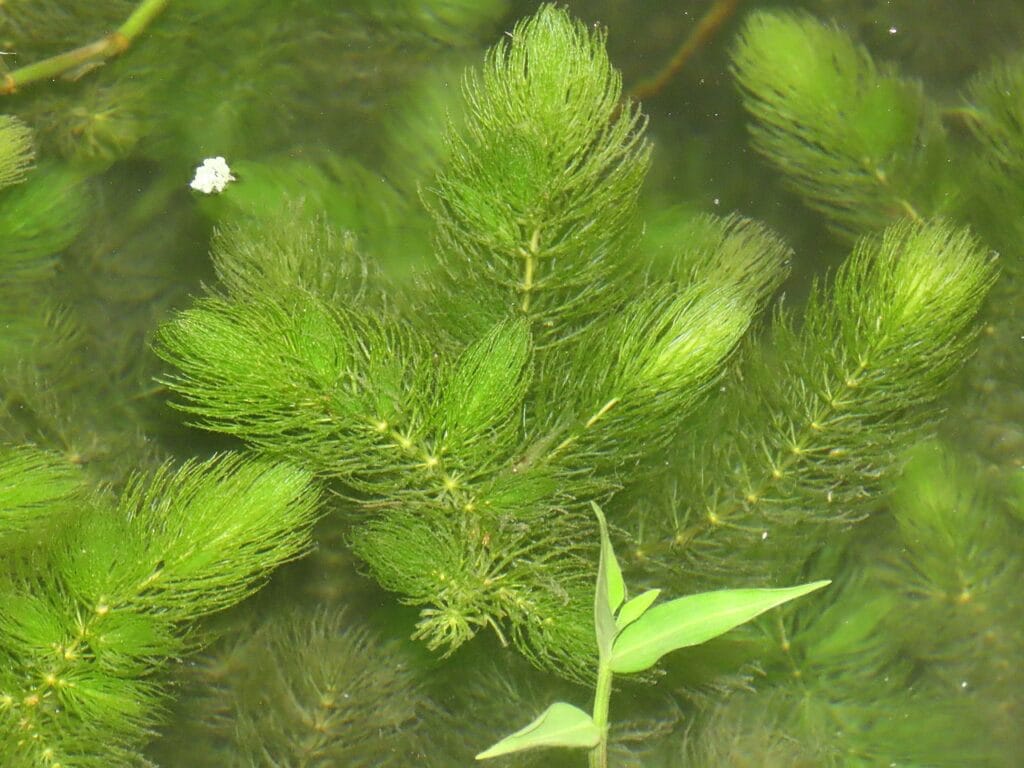
Hornwort is a fast-growing, floating or anchored plant that absorbs excess nutrients and helps prevent algae.
- Lighting: Low to moderate
- CO₂: Not required
- Placement: Background or floating
- Why it’s great: Great for water quality and as a hiding place for fry.
6. Water Wisteria (Hygrophila difformis)
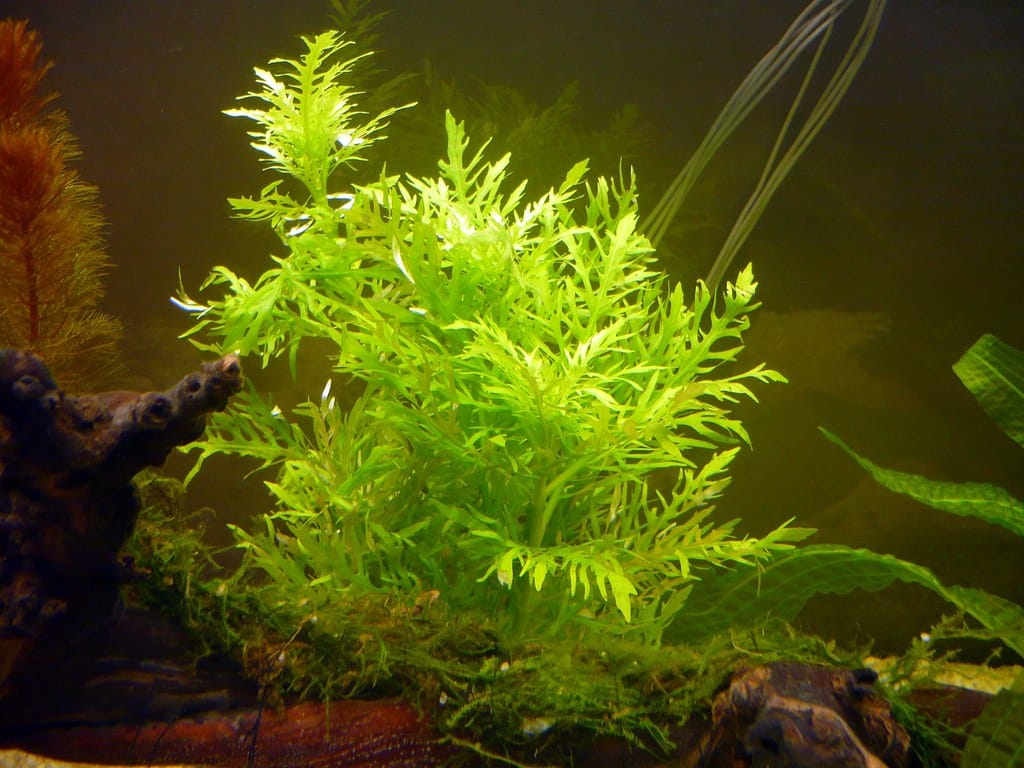
This fast-growing, bright green plant helps maintain water quality by absorbing nitrates.
- Lighting: Moderate
- CO₂: Optional
- Placement: Background or midground
- Why it’s great: Excellent for filling space and reducing algae growth.
7. Amazon Sword (Echinodorus amazonicus)
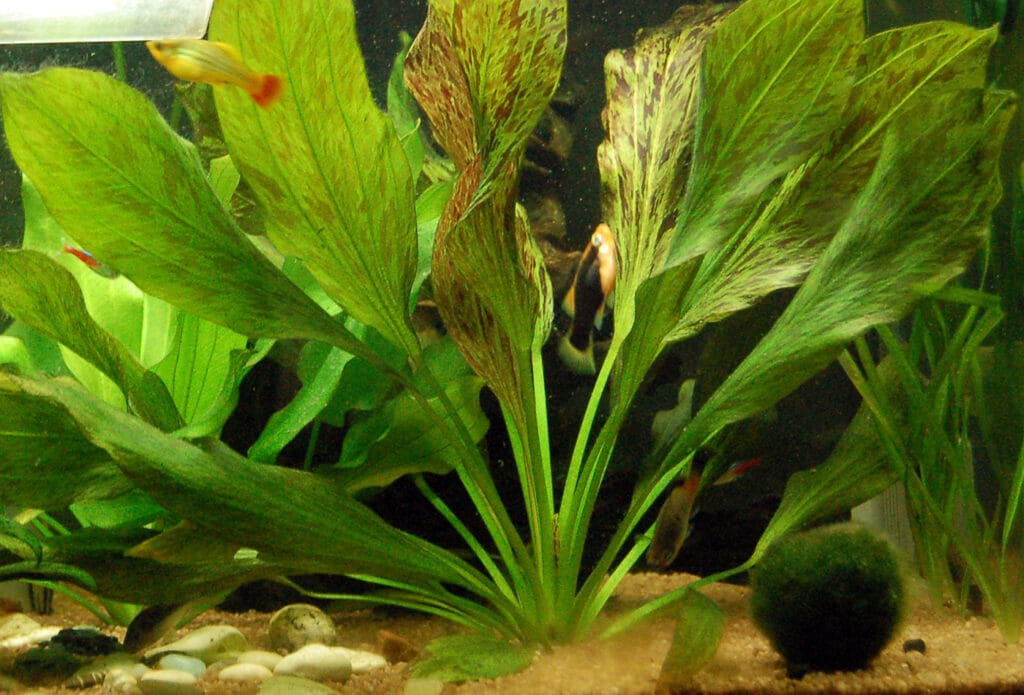
One of the most popular background plants, the Amazon Sword is easy to grow but does appreciate nutrient-rich substrate.
- Lighting: Moderate
- CO₂: Optional
- Placement: Background
- Why it’s great: Impressive size and lush appearance in a beginner-friendly package.
8. Floating Plants (e.g., Frogbit, Duckweed, Water Lettuce)
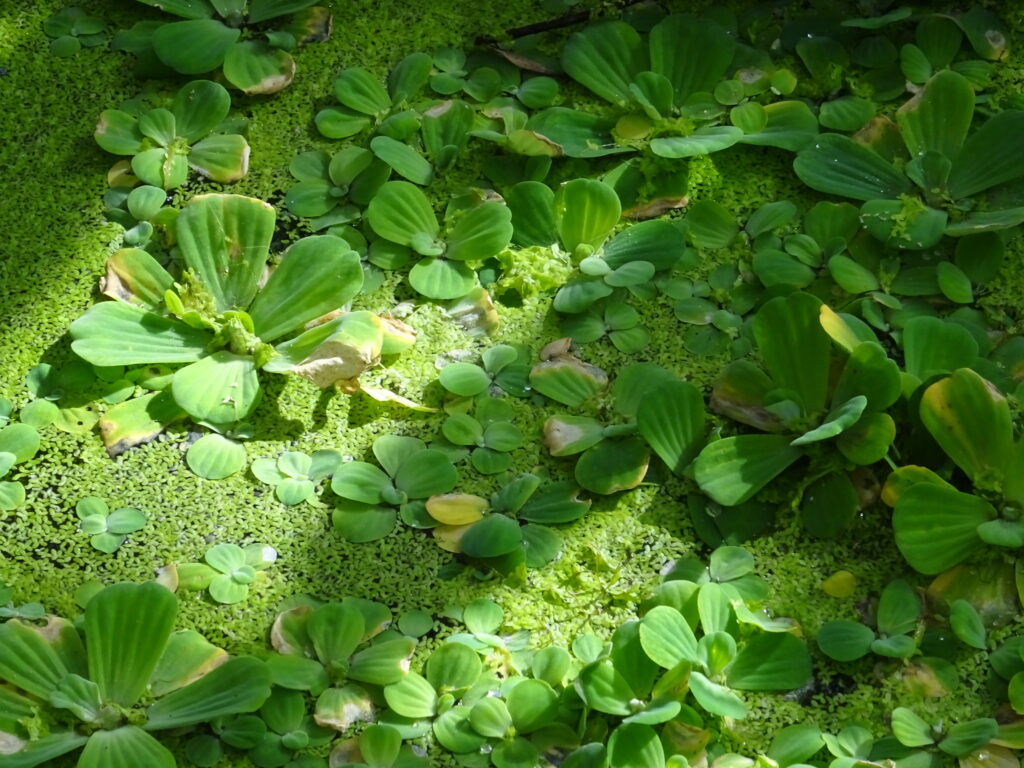
Floating plants are great for shading the tank and soaking up excess nutrients.
- Lighting: Low to moderate
- CO₂: Not required
- Placement: Surface
- Why they’re great: They provide shade, reduce algae, and create a natural look.
These beginner-friendly plants will help you create a beautiful aquascape while keeping maintenance manageable. You can mix and match them to suit your tank size, fish, and desired look, and all of them thrive in low-tech, easy-care setups.
Planting and Placement Tips for Beginners
Planting your aquarium properly is just as important as choosing the right plants. A well-thought-out layout not only looks beautiful but also creates a healthier environment for your fish and plants. Here are some practical tips to get started:
Plan Your Layout
Before planting, take a moment to visualise your aquascape. Use the concept of foreground, midground, and background to create depth and balance:
- Foreground plants: These are shorter, low-growing plants that go in the front of the tank, like Cryptocoryne or small Anubias varieties.
- Midground plants: Medium-height plants such as Java Fern and Water Wisteria work well here.
- Background plants: Tall, fast-growing plants like Vallisneria and Amazon Sword fill the back and corners of your tank.
Sketch a quick layout or look at reference photos for inspiration. This helps avoid overcrowding and ensures all plants have space to grow.
Prepare the Substrate
Most beginner-friendly plants do fine in standard gravel, but nutrient-rich substrate can boost growth for root-feeding plants like Amazon Sword and Cryptocoryne. Rinse your substrate thoroughly before adding it to prevent cloudiness.
Attach Epiphyte Plants
Some plants, like Java Fern and Anubias, are epiphytes — they don’t need to be buried in the substrate. Instead, attach them to rocks, driftwood, or decorations using fishing line, cotton thread, or aquarium-safe glue.
Spacing Matters
Give each plant enough room to grow. Crowding can block light and limit circulation, leading to poor health. Leave about an inch or two between smaller plants and more for larger ones.
Start with Easy Clumps
Don’t try to plant every little stem perfectly on your first try. Start with small bunches or clumps and adjust as they grow in. Many plants, like Hornwort and Water Wisteria, can even be floated until you decide where to place them permanently.
With these simple tips, you’ll set the stage for a thriving planted aquarium that looks natural and healthy.
If you’re still cycling or setting up your tank, start with our step-by-step guide to setting up your first freshwater fish tank.
Basic Care and Maintenance of Aquarium Plants
Once your plants are in place, maintaining them is essential for keeping your aquarium vibrant and balanced. Fortunately, most beginner-friendly plants require only minimal care. Here’s what you need to know:
Lighting
Light is one of the most important factors for plant growth. Most easy plants, such as Java Fern, Anubias, and Vallisneria, thrive under standard aquarium LED lights designed for freshwater tanks. Aim for about 8–10 hours of light per day, using a timer to maintain consistency. Too much light can cause algae, so avoid leaving the lights on longer than necessary.
Water Parameters
Most beginner aquarium plants are very forgiving of water conditions. Keep your tank within these general ranges:
- Temperature: 22–28°C (72–82°F)
- pH: 6.5–7.5
- Hardness: Soft to moderately hard water
Perform regular water changes (20–30% weekly) to keep the water clean and nutrient levels balanced.
Fertilization
Although many hardy plants will grow without additional fertilisers, they’ll look their best with a little boost:
- Use liquid fertilisers weekly for water-column feeders like Hornwort and Wisteria.
- Root tabs can help root-feeders like Amazon Sword and Cryptocoryne thrive.
Start with small amounts and adjust as you see how your plants respond.
Pruning and Cleaning
Plants will naturally shed old or damaged leaves. Use aquascaping scissors or your fingers to trim away yellowing or melting leaves. This helps the plant focus energy on new growth and prevents decaying matter from fouling your water. Trim overgrown stems to keep your aquascape neat and prevent light from being blocked.
Watch for Algae
Healthy plants can help prevent algae by competing for nutrients, but algae may still appear. If you notice algae on your plants, gently wipe the leaves or remove affected sections. Reducing lighting time and improving water circulation can also help.
By following these simple care tips, you’ll keep your plants lush, your tank clean, and your aquatic ecosystem healthy and balanced.
For a full maintenance routine, check out our Ultimate Aquarium Maintenance Guide.

Conclusion
Adding live plants to your freshwater aquarium is one of the best decisions you can make, whether you’re a beginner or an experienced hobbyist. Not only do they enhance the natural beauty of your tank, but they also contribute to a healthy environment for your fish by improving water quality and providing shelter.
With so many easy, hardy, and low-maintenance options available, you don’t need to be intimidated by the idea of keeping live plants. From lush background plants like Vallisneria to compact foreground choices like Cryptocoryne and striking centrepiece plants like Anubias, there’s something for every tank size and style.
Start with a few beginner-friendly species, provide adequate light, maintain good water quality, and give them a little care each week, and you’ll enjoy a thriving, green underwater garden.
Live plants truly bring your aquarium to life, creating a more natural and vibrant home for your aquatic pets.

